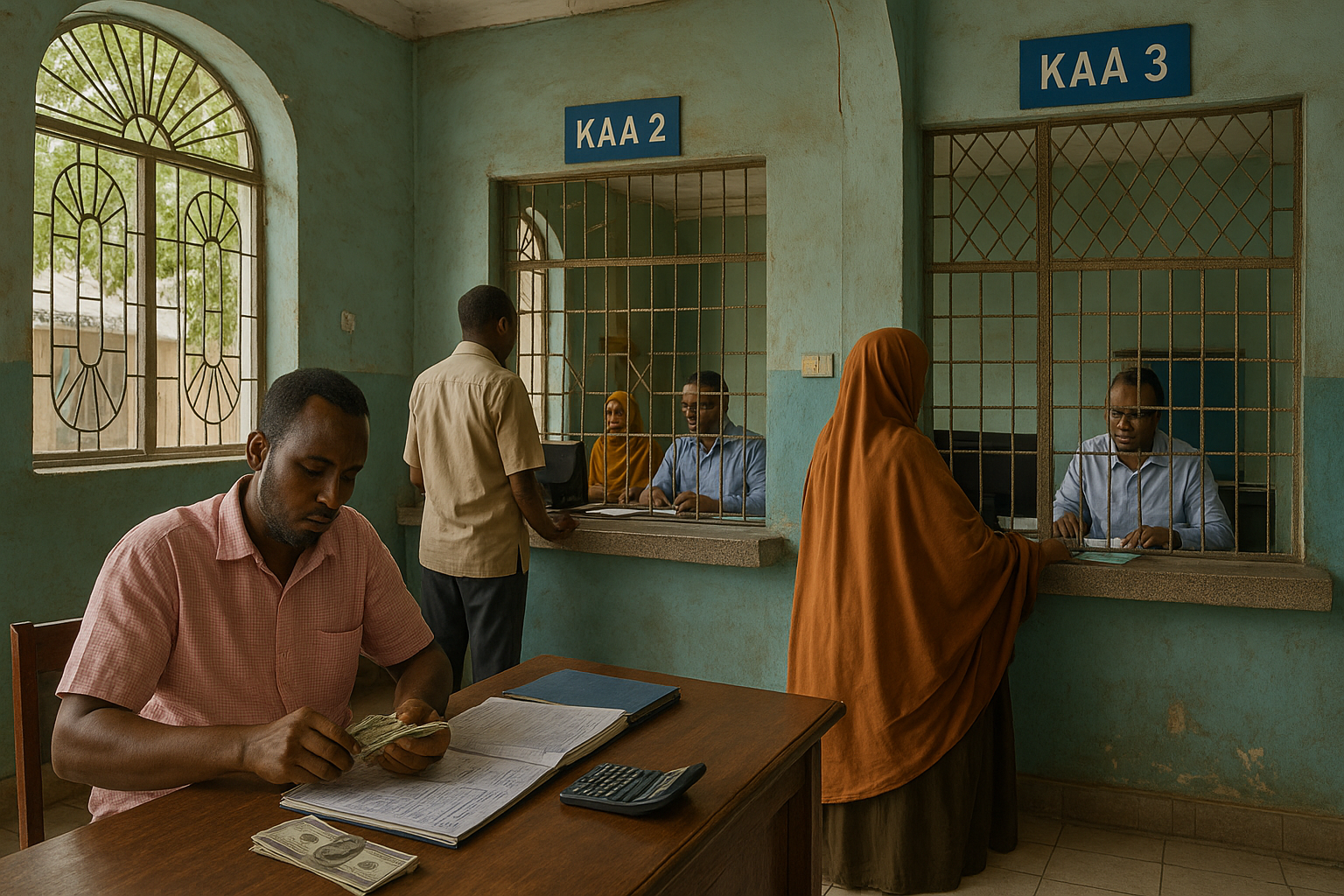Somalia’s Fiscal Future: Domestic Revenue Key to Reducing Aid Dependence
The Somalia Economic Update highlights the country’s modest economic growth and urgent need to boost domestic revenue to sustain public services and reduce reliance on foreign aid. Structural reforms, fiscal federalism, and tax modernization are critical to achieving long-term stability and economic resilience.

Somalia is entering a pivotal stage in its economic and political evolution, as documented in the 10th edition of the Somalia Economic Update, a report prepared by the World Bank, Federal Government of Somalia (FGS), and the Somalia National Bureau of Statistics (SNBS). The report emphasizes the critical role of domestic revenue in transforming a state still heavily dependent on foreign aid into a self-sustaining economy. With the conclusion of the Heavily Indebted Poor Countries (HIPC) Initiative in 2023 and accession to the East African Community (EAC) in 2024, Somalia launched the National Transformation Plan (2025–2029), an ambitious framework aligned with the Centennial Vision 2060, seeking to propel the country toward middle-income status. Yet, this optimism is tempered by ongoing risks: aid unpredictability, climate shocks, entrenched insecurity, and a weak fiscal structure that limits state-building efforts.
Growth Returns, but Fragilities Linger Beneath the Surface
In 2024, Somalia recorded 4.0% real GDP growth, largely fueled by improvements in agriculture and strong inflows of remittances. A rebound in livestock exports, particularly to Gulf states, played a major role, with exports totaling US$951 million. The fisheries sector also showed considerable promise, albeit from a small base, signaling potential in an underdeveloped but resource-rich industry. Meanwhile, private sector credit expanded by 23%, boosting construction and investment. Yet, these gains coexist with deep structural weaknesses. Somalia’s heavy reliance on imports pushed its trade deficit to 62.1% of GDP, while the current account deficit, though narrowed slightly to 8.9%, remains financed largely by remittances and aid.
Inflation eased to 5.5% in 2024, thanks to lower global commodity prices and favorable weather. The Somali shilling remained relatively stable, buoyed by de facto dollarization. However, rising costs in housing, telecommunications, and transport continue to exert inflationary pressure, especially in urban areas. Poverty, too, remains stubbornly high, with 54% of the population living below the national poverty line. While food security improved temporarily in 2023–24, the outlook for 2025 is grim, with forecasts suggesting an increase in acute food insecurity as rainfall levels decline and humanitarian assistance diminishes.
Public Finances: Growing Ambitions, Tight Constraints
On the fiscal front, the FGS posted a small surplus in 2024, driven by modest improvements in revenue collection and higher-than-expected grants. Yet, domestic revenue mobilization remains one of the lowest in the world, with only 3% of GDP raised internally and nearly 60% of revenue sourced from external grants. Tax revenue reached just 2.2% of GDP, well below the 15% threshold commonly viewed as necessary to fund basic services. The 2025 budget reflects ambitious goals, projecting spending of US$1.36 billion (10.4% of GDP), a significant jump from 2024’s 7.5%. Major increases are slated for social services, especially education, health, and energy infrastructure. Capital spending is expected to rise to US$180 million, mostly donor-financed.
Security-related wages remain a fiscal burden, with over 38% of FGS spending going to payroll, and more than half of that directed to the security sector. Intergovernmental transfers are increasing, but without a finalized fiscal federalism framework, the system suffers from inefficiencies, overlapping taxation, and weak accountability across federal and regional levels. States like Puntland and Jubaland saw marginal revenue increases in 2024, yet still depend on donor funds to function. Capital spending remains negligible in most regions, highlighting the need for better coordination and equitable resource distribution.
Digital Finance and New Laws Pave the Way for Inclusion
One of the more promising developments is the ongoing transformation of Somalia’s financial sector. The Somalia Instant Payment System (SIPS), launched in December 2024, is already facilitating real-time transactions across a digital ecosystem. Backed by reforms such as the Financial Institutions Law, Takaful Insurance Law, and a forthcoming National Payment Systems Act, these moves are strengthening regulatory oversight and expanding financial inclusion. Over 90% of households now use mobile money, while commercial bank assets have grown to US$2 billion. Still, banking services remain shallow, with lending focused heavily on trade and real estate, and credit to GDP at just 5%.
Remittances, mainly from the Somali diaspora in the UK, US, Gulf countries, and South Africa, remain a lifeline, not only for household consumption but also for macroeconomic stability. These flows grew 25% in 2024, reflecting improving global financial conditions and looser monetary policy in host countries.
Building Fiscal Independence is Somalia’s Defining Test
The report’s central argument is clear: boosting domestic revenue is the cornerstone of Somalia’s economic future. Without it, the government cannot sustainably fund health, education, or infrastructure, nor can it wean itself off volatile donor funding. Key reforms proposed include expanding the tax base by implementing a unified Income Tax Law, introducing excise taxes, taxing natural resources, and harmonizing customs across FMS ports. Tax administration must also be modernized through automation, improved compliance, and greater taxpayer education.
Crucially, the success of these reforms hinges on finalizing a transparent, legally binding fiscal federalism model that assigns tax powers clearly between federal and regional levels. The inclusion of ODA in the national budget, rather than relying on off-budget, project-based aid, would also increase predictability and planning efficiency. The private sector, too, must play a larger role in financing essential services.
Somalia’s post-HIPC era offers a narrow window of opportunity. If reforms stall, the country risks slipping back into economic uncertainty and fiscal unsustainability. But with continued support, disciplined governance, and a commitment to revenue reform, Somalia can begin to loosen its dependence on external actors and lay the foundation for a more resilient, citizen-focused state.
- FIRST PUBLISHED IN:
- Devdiscourse










